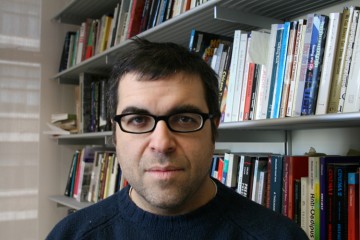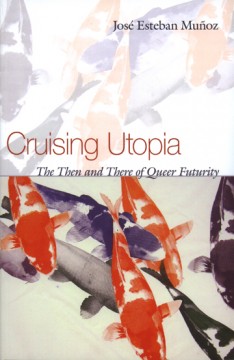I write with the animating glow of philosophical idealism, and I articulate my thought through descriptions of performances of queer aesthetics practiced in everyday life, literature and art.
— José Muñoz, Social Text Journal online, June 2010
José Muñoz was The Visiting Artists Program (VAP) at The School of the Art Institute of Chicago’s first speaker of the Spring semester. As somewhat of a newcomer to his work, and having never had the pleasure of hearing him speak before, I was really inspired by his lecture, entitled “Wise Latinas: Mario Montez and Others,” and the patience and grace with which he interfaced with the audience and responded to their questions. The lecture itself was a clever conflation between the confirmation hearings of Sonya Sotomayor and Andy Warhol’s Screen Test No. 2 (featuring Mario Montez), with some amazing Nao Bustamante video thrown in for good measure. It focused on issues of camp, affect, and stereotype, with Muñoz stating that the “…calculating, strategic use of history is one way we can reject coercive mimesis.” Through his examination of the politicized biography, he mined notions of universalizing versus particularizing lived experience in smart, unexpected, and humorous ways.
Aside from his interest in punk and the DIY aesthetics of amateurism– subjects that are very meaningful to me too– Muñoz is probably best known as the author of Cruising Utopia: The Then and There of Queer Futurity, a book that presents a “critical idea of hope.” The very idea that hope can be something other then naïve or flowery and instead can be used to critique the here and now, with its itinerant how and why, is powerful stuff. Muñoz says it best when he writes:
Cruising Utopia is a book that longs for collectivity during moments of escalating political isolation. It is my hope that Cruising Utopia offers readers resources that will help us belong to a future that is often narrated as impossible but is nonetheless attainable and utterly necessary. (Social Text Journal online, June 2010)
I enjoy reading Muñoz because his writing style is an engaging mixture of theory and media criticism laced with emotionally raw personal anecdotes. During his visit, he said he tries to “push the conventions of what critical writing is” by letting the artwork he’s writing about dictate the voice of his writing. This focus on a more collaborative approach to writing reflects the often hybridized practices of both contemporary artists and contemporary art writers– and it also reflects how one’s creative approach to even non-fiction writing can function as an art practice in and of itself.
To read more of Muñoz’s thoughts, check out the excellent interview conducted by Claudine Ise, fellow Art21 blog contributor, over on Bad at Sports. And to join the dialogue on Muñoz with VAP, please become a fan on Facebook and get commenting!






Pingback: Tweets that mention José Muñoz in Chicago #art #edu -- Topsy.com
Pingback: Tobias Putrih | Art21 Blog